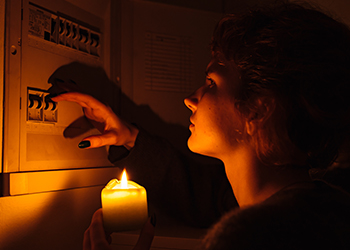 Electricity is a vital part of our daily lives, but when something goes wrong, it can be frustrating and even dangerous. Before calling an electrician, there are a few basic troubleshooting steps you can take to diagnose and possibly resolve minor electrical problems in your home. Here’s a guide to help you troubleshoot common electrical issues safely and effectively.
Electricity is a vital part of our daily lives, but when something goes wrong, it can be frustrating and even dangerous. Before calling an electrician, there are a few basic troubleshooting steps you can take to diagnose and possibly resolve minor electrical problems in your home. Here’s a guide to help you troubleshoot common electrical issues safely and effectively.
- Safety First
Whenever troubleshooting electrical problems, always prioritize safety. If you’re unsure about handling an issue, it’s best to contact a licensed electrician. Electrical work can be dangerous, and professional expertise ensures your home remains safe and up to code.
- Power Outages in a Specific Area
If you experience a power outage in only one part of your home while the rest remains powered, follow these steps:
- Check the circuit breaker panel for a tripped breaker. If a breaker is in the middle or “off” position, reset it by turning it off and then back on.
- If the problem persists, unplug any high-wattage appliances that may have overloaded the circuit and try again.
- If resetting the breaker doesn’t restore power, there may be an issue with wiring or the outlet itself, requiring a professional electrician.
- Frequent Circuit Breaker Trips
A circuit breaker is designed to protect your home by shutting off power when an overload or short circuit occurs. If it trips frequently:
- Identify what devices are connected to the circuit and unplug any unnecessary items.
- Check if any appliance is faulty or drawing excessive power.
- If the issue continues, your circuit may be overloaded and need an upgrade from a licensed electrician.
- Dead Outlets
If an outlet stops working:
- First, check if a nearby GFCI (Ground Fault Circuit Interrupter) outlet has tripped. Press the “reset” button to restore power.
- Inspect the breaker panel for any tripped breakers.
- If there’s no visible cause, the wiring may be loose or damaged, requiring professional attention.
- Flickering or Dimming Lights
Lights that flicker or dim may indicate:
- A loose bulb or connection—tighten the bulb or replace it if necessary.
- An overloaded circuit—reduce the number of devices plugged into the same circuit.
- Voltage fluctuations, which may require an electrician to inspect your home’s electrical panel and wiring.
- Light Switches Not Working Properly
If a light switch isn’t functioning:
- Verify that the bulb is not burned out.
- If a dimmer switch is involved, check if it’s compatible with the bulb type.
- If the switch feels hot or makes a buzzing sound, it may be faulty and should be replaced by a professional.
- Burning Smell or Sparks from Outlets
This is a serious issue that requires immediate action:
- Turn off power to the affected area at the breaker panel.
- Do not use the outlet or switch until it has been inspected.
- Call an electrician immediately, as this could indicate faulty wiring or an electrical fire hazard.
- High Electric Bills Without Explanation
If your energy bill suddenly increases without any significant change in usage:
- Check for old or inefficient appliances that may be using excessive power.
- Inspect for faulty wiring or leaks in your home’s electrical system.
- Consider investing in energy-efficient lighting and appliances.
- If your home has an electric heating system a spike in your power bill during excessively cold months is normal.
By following these troubleshooting steps, you can identify and resolve minor electrical issues while ensuring your home remains safe and functional.
